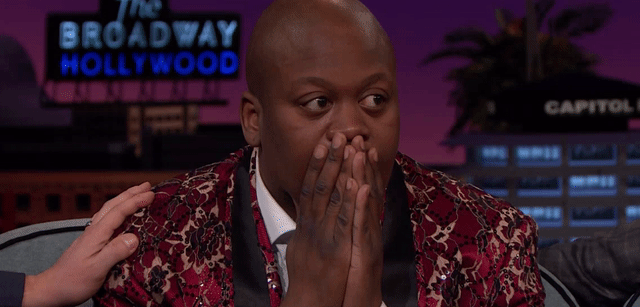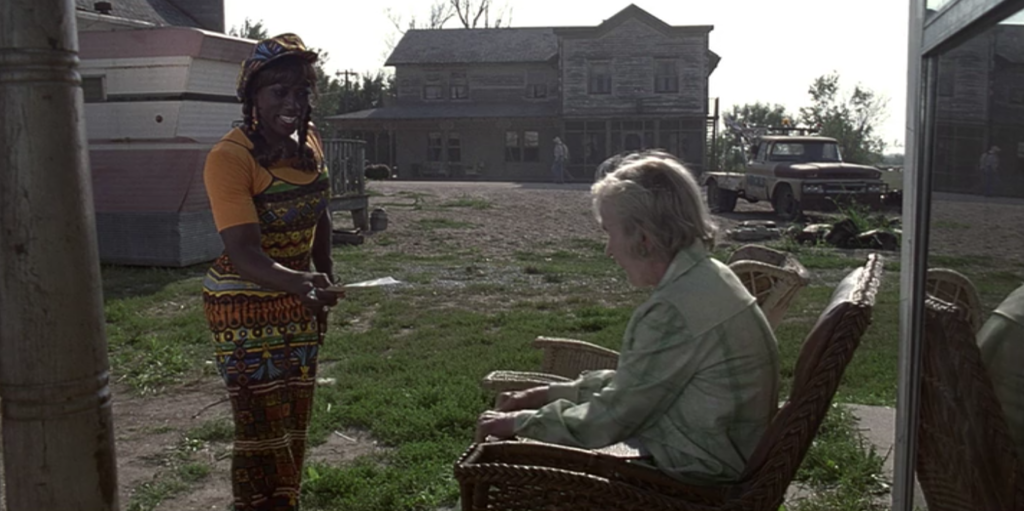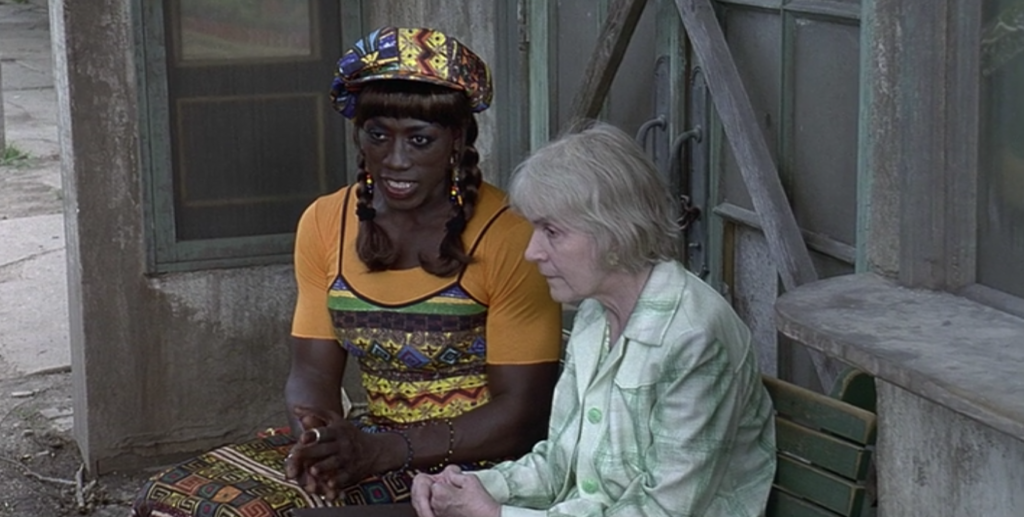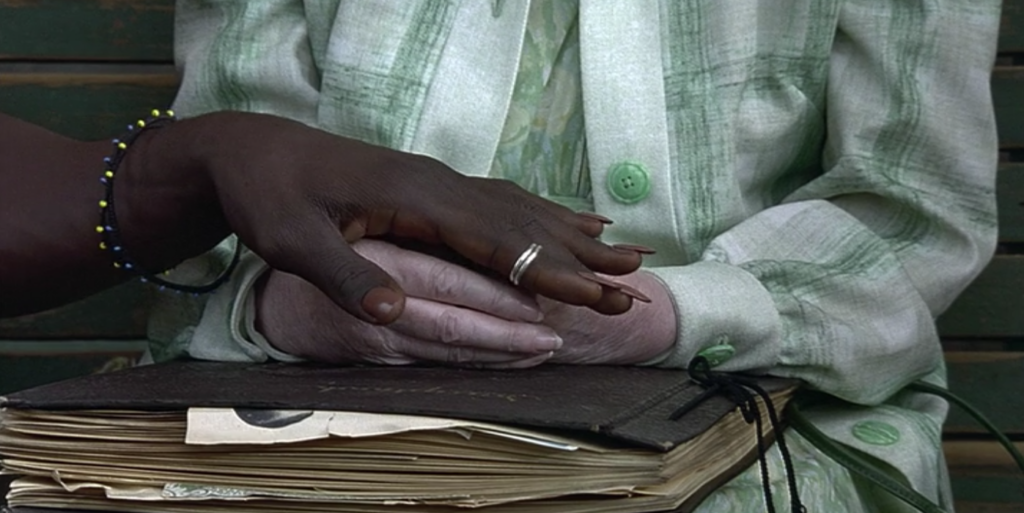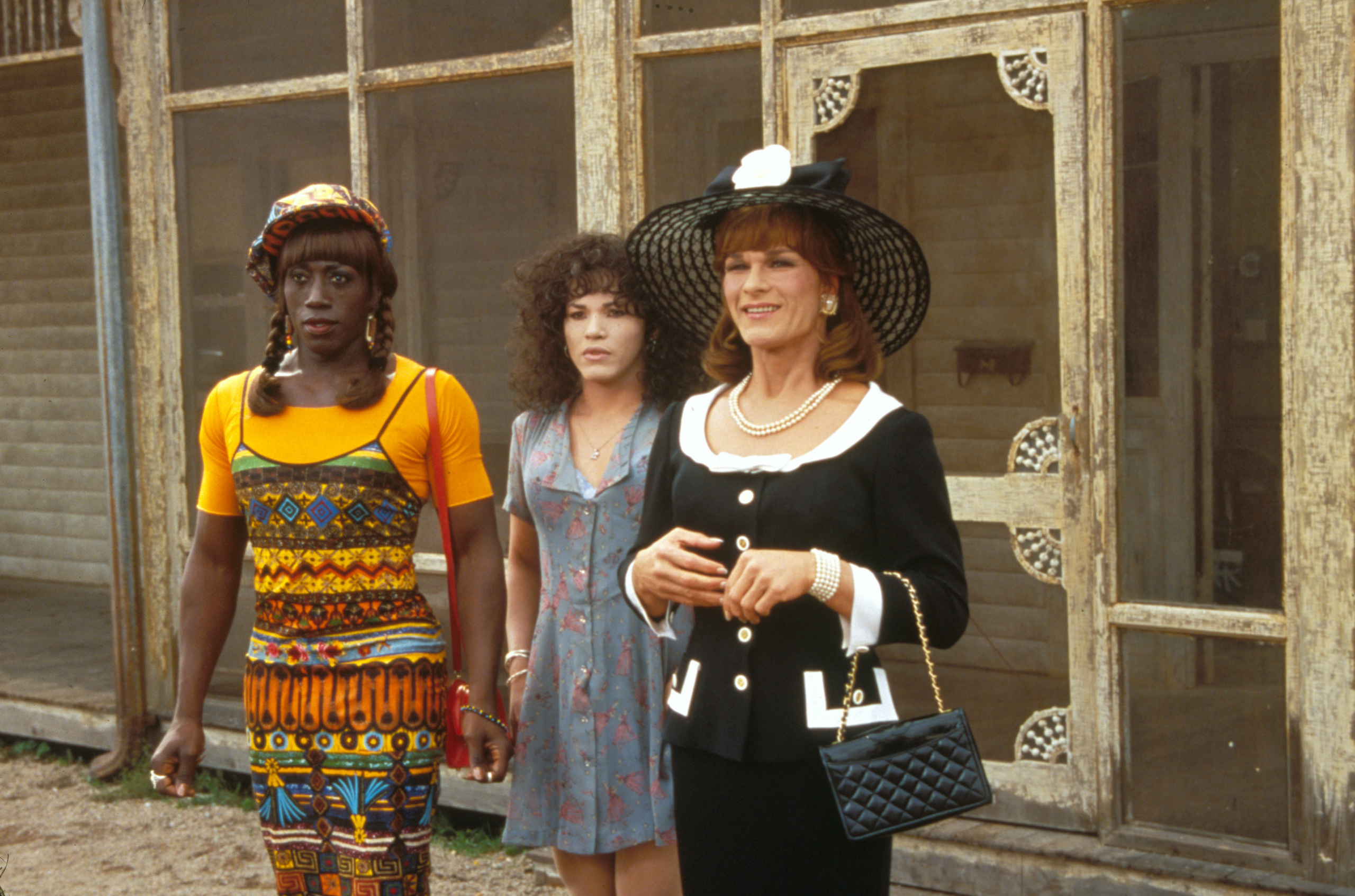
Feb
Diversity Without Pity #34 | To Wong Foo, Thanks For Everything! Julie Newmar
[responsivevoice_button voice=”UK English Female” buttontext=”Listen to Post”]
To Wong Foo, Thanks For Everything! Julie Newmar is currently streaming on Netflix. I wanted to rewatch it and study how production designer Wynn Thomas created the world for the film about three New York City drag queens who go on a road trip to a national drag beauty pageant and wind up stranded in a small, desolate town. Since his work on Do The Right Thing was so obvious, I wanted to study how he blends costume design, set design, interior design, and cinematography for these characters to embody the space.
Watching a mainstream movie about U.S. drag culture that is more than 20 years old, you brace yourself. You know that not everything will age well.
This movie has been understandably criticized about why obvious drag performers were still wearing drag when they weren’t performing. The success of RuPaul’s Drag Race has taught us that drag is not the same thing as being transgendered. Drag has more in common with kabuki theater or vaudeville. Here’s Noxeema (played by Wesley Snipes) giving Chi Chi (played by John Leguizamo) a quick lesson on the differences between drag and transgender.
But by being in drag constantly, aren’t they breaking their own rules?
Production Design as a Tool to ‘Queer’ Space
With so much insistence on normativeness within in LGBTQ culture as a path toward acceptance and citizenship, I especially love queer theory as it operates in costume design, production design, and character design. Because while queer theory was born from the academic world, being an academic isn’t a requirement. Queer theory examines how other people’s nonconformist actions disrupt — queer — areas where normative standards of gender identity, sexuality, and sexual orientation exist.
This is where, I believe, production design comes into place in this movie.
Wynn Thomas uses muted backgrounds in key scenes to make the main characters stand out. By deliberately saying these characters may disobey normative gender standards, they still deserve to fully exist — to live out loud — in these flat spaces.
”Queer theory examines how other people's nonconformist actions disrupt -- queer -- areas where normative standards of gender identity, sexuality, and sexual orientation exist.
Look at the sequences where Noxeema develops a true bond with a local woman who, for unknown reasons, has become mute. She and Noxeema eventually bond over their shared love of classic Dorothy Dandridge and Lena Horne movies.
- Shoutout to Wynn Thomas’ creative team for finding nude polish to match Wesley Snipes’ skin color. As a dark-skinned woman myself, finding nail color like this is not easy.
Note the setting is very faded to make sure Noxeema really stands out in this scene. Her queerness, however, is not used as a mockery. But to simply suggest that her unwillingness to adapt — to normalize herself — should not detract from her fearlessness, honesty, patience, and humor. And Snipes is doing more than performing “magical Negress.” He’s insisting this character — and by extension, the audience — accept women who look her with their full selves.
Beyond Gender Performance | Class and Race
Vida (played by Patrick Swayze) character grew up very wealthy. Yet, halfway through the movie, he winds up spending time in a desolate, poor White community. In a society that is increasingly stratified by class, and Hollywood fails to depict the lives of poor people accurately, this aspect of the movie should not be forgotten.
Chi Chi is Latina, Noxeema is African American. That should also not be forgotten. While we aren’t afforded much backstory, these two characters articulate specific experiences of being queer people of color. For example, when Noxeema first arrives in her drab room she says, “The last a Black person was here, it was Sam Cooke.” Regardless of sexuality, this character was more keenly aware of her race than her gender presentation. When Chi Chi and Vida have a huge fight, Chi Chi brings up the condescending tone Vida takes as a White woman, toward her and Noxeema, Black and Latina. To Wong Foo… raises an important topic that, even as these characters face external racism from the police, racism still exists within queer communities.
”By deliberately saying these characters may disobey normative gender standards, they still deserve to fully exist -- to live out loud -- in these flat spaces.
Priscilla, Queen of the Dessert is often cited as the superior drag roadshow movie, as this and To Wong Foo… both came out around the same time, and follow similar story structures. But when I look back on Priscilla, it has aged much worse when it comes to race, gender performance, and normative feminine behavior.
Pinay, the wife of the mechanic, is a Filipino woman and is characterized as hypersexual, depraved, and undeserving of marriage. Her character is set up as a contrast to Terrance Stamp’s character, who performs the heteronormative White feminine ideal. Regardless if the mechanic is actually attracted to Stamp’s character sexually (because gender is not the same as sexuality), it would seem that in Priscilla, a gay White man in day drag is more desirable than a sexually aggressive Asian woman, simply by performing femininity in a more socially-acceptable manner. It’s worth re-examining the reverence of Priscilla, Queen of the Dessert. Whereas Too Wong Foo addresses racism both within and outside queer communities, the racism of Priscilla is often ignored.
Violence Against Trans Communities
To Wong Foo… also addresses transgender violence at the hands of the police, and while traveling across the country. Vida, Noxeema, and Chi Chi all intuitively know that they cannot drive forever. They’ll eventually have to stop at rest stop. And with that, impending attacks for presenting as transgendered women (of color). It would be a mistake to look at many of the threats to safety and livelihood as mere relics of the ’90s. Trans women — particularly trans women of color — are killed at disproportionately higher rates . To Wong Foo was not only prescient, it is still relevant.
”To Wong Foo... raises an important topic that, even as these characters face external racism from the police, racism still exists within queer communities.
I don’t know what it’s like to be an LGBT person of color. But I do know what its like to be a woman who is vulnerable to sexual violence. I know what it’s like to be a Black woman and have my femininity and vulnerability challenged. I know what it’s like to have (queer and cisgender) White women (and men) pander to my Black and Latina sisters (and brothers). So I examine To Wong Foo, Thanks For Everything! Julie Newmar from those lenses.
And I look at that film as a visual communicator. It may seem pretentious, but a production designer’s job is to elevate characters beyond what’s on paper. Rather than requiring the script explain why characters are where they are and why they look how they look, through a combination of costumes, sets, lighting, and props, a production designer shows us that these characters have full lives, and worthy of recognizing their full humanity.
Diversity Without Pity is a blog series from IDSL, highlighting media that uses smart design, and considers the diversity of it’s casting without selling the viewer or consumer short.



